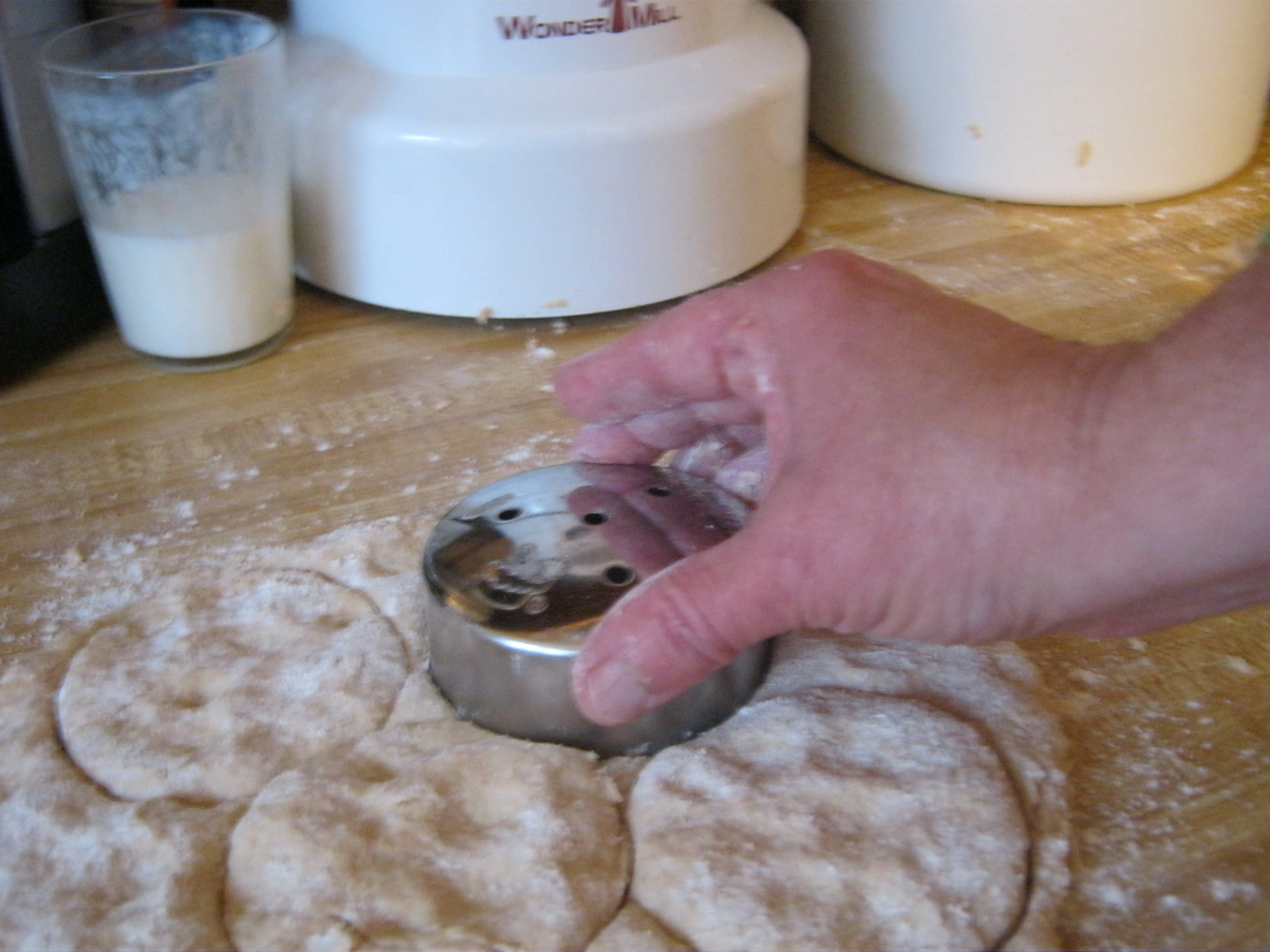The sight above is one of my favorites! Once I see that lovely stuff in the Wondermill flour hopper…I just know good things that are good for us are about to happen in my kitchen.
Today is no exception. I’m about to make fresh-milled buttermilk biscuits! Now I will be honest and tell you that at first this was a video in the making…then I remembered to take pictures *sheepish grin* – so if you want more details, please subscribe to my YouTube Channel – the video should be up soon after posting this blog. And if perhaps you’re reading this much later, just go to the channel and put in the word ‘biscuit’ in the search field and you’ll get there (:
Now on with the joyful task at hand! Being in the South, well biscuits are serious business! No, I mean that literally. You see for so long the only kind of wheat that grew in the South was soft wheat (which has less protein/gluten which is needed for good loaf bread) thus the biscuit became the ‘bread’ of the South.
It wasn’t until ‘bagged = dead’ flour that the all-purpose variety came to be used in making biscuits and aiding in their rise and fluff. An all purpose flour can be made with 50% soft wheat and 50% hard wheat. But traditionally the real, down home, old time (before dead-bagged flour) biscuits were all soft wheat and thus a tad bit lower on the rise. This is how I like to make them.
Ingredients:
- 2 Cups Freshly Milled Soft Flour (or 50/50 hard/soft if you prefer a high biscuit)
- Extra flour for dusting/kneading
- 4 tsp of baking powder
- 1/4 tsp of baking soda
- 1/2 tsp sea salt
- 1 oz chilled butter (salted – if using unsalted up the salt quantity above to 3/4 tsp)*
- 2 oz chilled coconut oil (shortening may be used, but it’s not the healthiest choice)*
- 1 Cup low fat buttermilk
*If you do not have coconut oil and still prefer not to use shortening you can use a total of 3oz of chilled butter.
Pre-heat your oven to 400 degrees F.
Mix together all the dry ingredients (other than the dusting flour) with a fork or whisk in a large bowl.
Sorry, no pastry cutters allowed in real Southern Buttermilk Biscuits. Y’all are gonna get your hands messy and you’re gonna love it. Trust me. It’s therapy…….Using your fingertips rub the chilled butter/coconut oil into the dry goods until the mixture looks like a coarse meal or crumbly. If you are hot-handed, be sure these are practically frozen and move fast.
Make a well in the center of the crumbly mixture and the pour in the lovely tangy buttermilk.
Mix with a large spoon just enough to combine everything. Then dust your hands and knead inside the bowl until all the flour has been picked up.
Flour your surface with the extra flour and turn out the dough. Fold the dough over on itself then knead – repeat, fold, knead, repeat – for 20 times or approximately 30 seconds until the dough appears smooth and softer.
Press the dough to be a 1 inch thick and dimple the top. Now using a large biscuit cutter cut (no twisting) each biscuit until you can cut no more circles.
 Transfer to a baking dish (sadly mine were all packed while making this – metal works best) not quite touching each other.
Transfer to a baking dish (sadly mine were all packed while making this – metal works best) not quite touching each other.
Ball up your scrap dough and repeat until no more dough. Left over biscuit dough can be frozen.
 I like to butter the tops of our biscuits before baking.
I like to butter the tops of our biscuits before baking.
Bake 15-20 minutes. Turn out the lovely little gems in to a towel lined basket and cool for a little while before tackling with butter, apple butter, jam or molasses! YUM!
Side note, remember my biscuits are all soft wheat, thus flatter and I do tend to make a thinner circle for cutting out. Mine was closer to 1/2 inch. So if you want taller, fluffier, higher biscuits – use 50/50 fresh milled hard/soft and 1 inch thickness.
Hope you enJOY these and treat yourself to some home-made goodness soon!
Please subscribe to my YouTube Channel for more details (and some other fun stuff) and come by our Facebook Page and see what else is going on in my kitchen!
Best Blessings!
Donna









One Response to Whole Wheat Buttermilk Biscuits